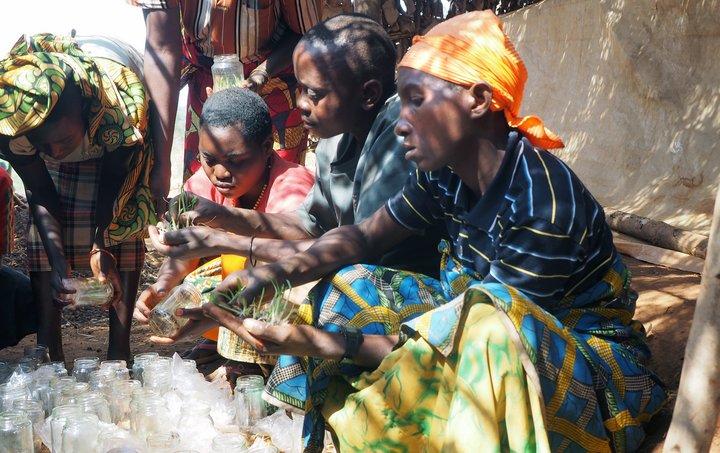How does gender influence banana disease management?

New research by Bioversity International is studying how women and men control and manage banana cropping systems in Burundi, and how this can influence the adoption of technologies that can help farmers manage a deadly banana disease.
In a blog on GREAT website, Bioversity International’s scientist François Iradukunda talks about his new research in Burundi studying how women and men own and control banana cropping systems, and how this can influence the adoption of technologies that can help farmers manage a deadly banana disease.
Banana is crucial for livelihood security for households in Burundi, providing food and income all year round. However, in east and central Africa a bacterial disease called Xanthomonas Wilt is threatening yields.
The disease, while lethal, is manageable through a series of control measures. Bioversity International is promoting a simple but effective approach called Single Diseased Stem Removal (SDSR). In order to be effective, SDSR requires the regular engagement of all household members involved in cropping activities, as it is based on regular monitoring, early removal of emerging male buds, and removal of diseased plants, among other control practices.
To get such involvement from household members, scientists from Bioversity International realized that they would need to understand how gender affects household member relationships with the cropping systems. The initial results from this research are explained by Bioversity International’s François Iradukunda in a blog on GREAT website.
Gender is of critical importance for the adoption of new tools and technologies. Research shows that inequalities in access to and control over agricultural production assets and market benefits contribute to lower productivity, lost income, and higher levels of poverty, as well as undernutrition.
“Our preliminary results show that banana is owned and controlled by men, as are cropping practices and the selection of banana varieties. These findings demonstrate that although banana is the main source of income, this does not necessarily mean that it contributes to the household’s well-being, since it is not benefiting both men and women. Therefore, there may be a disincentive for women to contribute to banana management activities and banana disease control if they are not getting the benefits from the crop,” says Iradukunda.
Other findings from the study show that access to information is also unequal. Women have limited exposure to sources of information such as radio. This has an impact on the adoption of agricultural technologies by women, not because they are not interested, but because they may not be aware of a technology, why it is important, or how it is applied.
To find out more about this work, read Green Gold: Implication of the gendered ownership of banana for crop disease management in Burundi
______________________
This research is supported by USAID/FFP, through the AMASHIGA project.
Photo: Banana farmers in Burundi. Credit: Bioversity International/F.Iradukunda
